In shipping and warehousing, even a perfectly packed pallet is only as secure as its wrapping. A poorly wrapped load can shift, collapse, or tear during transit—leading to product damage, safety risks, and added costs. By learning how to wrap pallets correctly, you can keep goods stable, protect workers, and improve shipping efficiency. This guide walks through practical steps, common mistakes to avoid, and the role of pallet wrap cling film in securing loads.
TL;DR (Key Takeaways):
- Prep First → Use sturdy pallets, stack evenly, and avoid overhangs for a stable foundation.
- Manual vs Machine → Manual works for low volumes; machines give faster, safer, and more consistent wraps.
- Film Choice Matters → Cast = clarity and easy unwind; Blown = strength and puncture resistance.
- Secure the Load → Anchor at the base, overlap layers by 50%, reinforce corners, and finish tight.
- Check & Save → Inspect for stability, prevent film waste with proper gauge/pre-stretched film, and adapt methods for irregular or tall loads.
Why Proper Pallet Wrapping Matters in Warehousing and Shipping
Pallet wrapping isn’t just about holding boxes together—it’s a frontline defense for your products and your people. Here’s why it matters:
- Preventing damage and loss
A loose or uneven wrap allows cartons to shift during transport. Proper wrapping keeps loads tight, reducing the chances of crushed boxes, broken items, or returns. - Improving safety
Unstable pallets increase the risk of workplace injuries when loads tip or fall. Secure wrapping makes material handling safer for employees using forklifts and pallet jacks. - Reducing freight costs
Well-wrapped pallets fit securely into trailers and reduce the likelihood of claims for damaged goods. Over time, this saves on both direct replacement costs and hidden costs like downtime. - Streamlining operations
A consistently wrapped pallet moves more easily through automated systems like conveyors and shrink tunnels. It also saves time at loading docks, since handlers can move loads confidently without re-securing them.
Related reading: Palletized Meaning and Benefits in Logistics explains how palletization improves shipping efficiency and product protection.
Preparing the Pallet Before Wrapping

Before you even touch a roll of pallet wrap cling film, it’s critical to prepare the pallet and the load itself. A strong foundation ensures the wrap can do its job effectively.
1. Choose the Right Pallet
- Check weight capacity: Every pallet has a maximum load. Overloading increases the risk of pallet breakage and accidents during transport.
- Inspect condition: Avoid cracked boards, loose nails, or damaged edges. Even the best wrap won’t compensate for a weak pallet base.
- Match pallet to load: Standard wood and plastic pallets both have advantages. Wooden pallets are economical and sturdy, while plastic pallets resist moisture and are ideal for cleaner environments.
2. Stack Items for Maximum Stability
- Align cartons tightly: Place boxes flush with one another to minimize gaps. Empty spaces create weak points where shifting can occur.
- Avoid overhangs: Boxes that stick out beyond the pallet edge are more likely to get crushed or torn during transit.
- Heaviest items at the bottom: Build a strong base by loading heavier cartons first, then lighter ones on top.
- Interlock boxes: Use a “brick pattern” (alternating the placement of each layer) to distribute weight evenly and improve load strength.
3. Stabilize Irregular or Fragile Loads
Not every shipment comes in neat, stackable cartons. For irregularly shaped items:
- Use corner boards or edge protectors to prevent collapse.
- Fill empty spaces with void fill packaging (like air pillows or paper rolls) for added stability.
- Consider adding a slip sheet between layers to reduce slippage.
Pro tip: If your pallets often include sharp-edged or irregular loads, a stronger stretch film with higher puncture resistance may be the best choice. See our Guide to Choosing the Right Stretch Wrap Gauge to match film strength with your application.
How to Wrap a Pallet by Hand Using Stretch Film
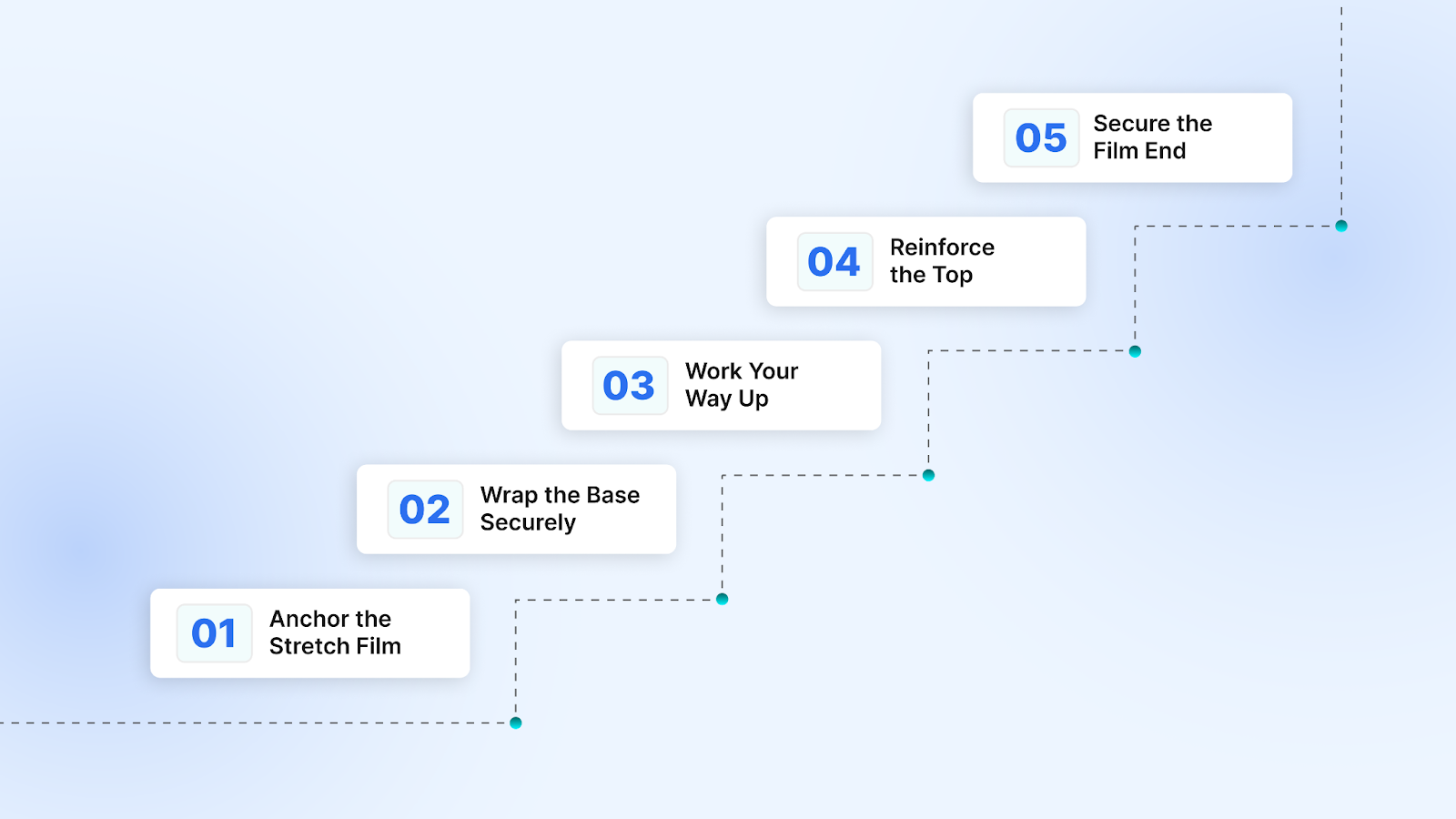
For many warehouses, especially with lower shipment volumes, manual pallet wrapping is the go-to method. While it takes more effort than machine wrapping, following the right process ensures a secure and professional result.
Step 1: Anchor the Stretch Film
- Start at the base of the pallet.
- Tuck the film tail into a corner or twist it around the pallet leg to anchor it.
- This prevents the wrap from slipping as you begin.
Step 2: Wrap the Base Securely
- Circle the base 3–4 times, ensuring the film covers both the pallet and the bottom layer of cartons.
- Wrapping tightly at the base locks the load to the pallet and prevents shifting.
Step 3: Work Your Way Up
- Move upward in overlapping layers (each layer should cover 50% of the previous one).
- Keep tension steady—too loose and the load shifts, too tight and the film may tear.
- Pay extra attention to corners, which are stress points that need firm coverage.
Step 4: Reinforce the Top
- Once you reach the top, wrap around it 2–3 times.
- If the load is taller, you may need to spiral back downward for added reinforcement.
Step 5: Secure the Film End
- Tear or cut the film and press the tail against the wrapped pallet so it clings.
- For added strength, tuck it under a film layer or corner.
Pro tip: When wrapping manually, workers should always walk forward (never backward) around the pallet to avoid tripping hazards.
Machine Wrapping vs. Manual Wrapping: Which Method is Right for You?
Choosing between manual and machine pallet wrapping depends on your shipping volume, labor resources, and load requirements. Both methods have their place in modern warehouses.
1. Manual Pallet Wrapping
Best for: Small warehouses, low-volume shipping, and unique or irregular loads.
- Pros
- Flexible for different pallet shapes and sizes.
- Lower upfront cost (no machinery needed).
- Good for occasional or emergency wrapping.
- Cons
- Labor-intensive and slower.
- Less consistent tension and coverage compared to a machine.
- Higher chance of operator fatigue leading to errors.
2. Machine Pallet Wrapping
Best for: Medium to large operations with high shipment volumes.
- Pros
- Consistent wrap tension and coverage for maximum load security.
- Faster and more efficient—saves time per pallet.
- Reduces film waste with programmable settings.
- Improves worker safety by minimizing physical strain.
- Cons
- Higher upfront cost for equipment.
- Requires space and maintenance.
- May not be ideal for small or irregular shipments.
If you’re shipping daily at scale, a machine wrapper pays for itself in reduced labor and material waste. But for operations wrapping a handful of pallets per day, manual wrapping is usually sufficient.
Curious about related equipment? Our guide on How High Does a Pallet Jack Lift shows how pallet jacks fit into broader warehouse efficiency.
Final Inspection and Readiness Checklist for Wrapped Pallets
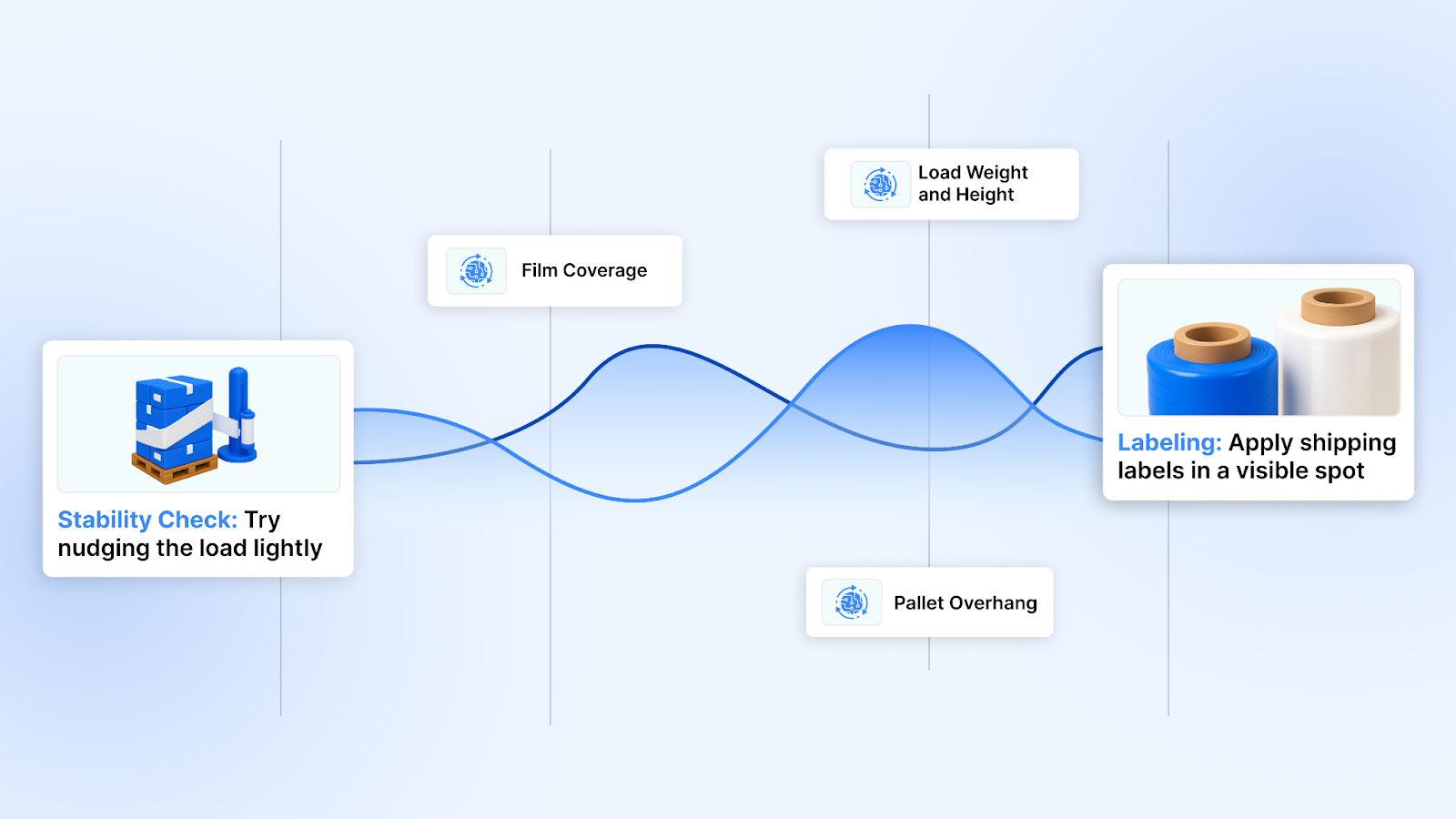
Even the best wrapping process can fail if the pallet isn’t double-checked before shipping. A final inspection ensures stability, safety, and compliance. Here’s a quick checklist you can apply:
1. Stability Check
- Try nudging the load lightly—does it shift or wobble?
- A properly wrapped pallet should feel like a single, solid unit.
2. Film Coverage
- Ensure there are no exposed corners or layers that could snag in transit.
- Look for consistent overlap and enough tension across the entire load.
3. Pallet Overhang
- Boxes should not hang over the pallet edge. Overhanging cartons are more likely to be crushed or damaged in handling.
4. Load Weight and Height
- Confirm the pallet weight doesn’t exceed forklift or pallet jack limits.
- For tall loads, add extra wrap reinforcement or use corner boards for added stability.
5. Labeling and Documentation
- Apply shipping labels in a visible spot (not hidden by film).
- Include barcodes, handling instructions, and compliance markings where needed.
With this checklist, you reduce the risk of product damage and ensure the pallet is truly ready for the road.
Want to go deeper into packaging quality? Check out our Essential Tips for Packaging Machine Maintenance to keep your systems reliable and efficient.
How Much Stretch Film Do You Really Need?
Stretch film is a recurring cost in warehouse operations, and using too much (or too little) directly impacts efficiency and product safety. Getting the balance right is key.
Pre-Stretched vs. Standard Film
- Pre-Stretched Film
- Stretched during manufacturing, requiring less effort to apply.
- Uses 20–50% less material than traditional film.
- Ideal for manual wrapping because it reduces strain on workers.
- Standard Film
- Stretched during application (manual or machine).
- Offers higher load stability when applied correctly.
- Often better for heavy or irregular loads that need maximum containment.
Factors That Influence Film Usage
- Load Type: Tall or uneven pallets need more wrap reinforcement.
- Pallet Weight: Heavier loads often require a thicker gauge or multiple passes.
- Application Method: Machine wrappers typically optimize film usage better than manual wrapping.
- Film Gauge: Lower gauges save material costs but may lack the durability needed for high-demand loads.
Tip: If your facility wraps hundreds of pallets per week, consider switching to a higher-quality stretch wrap with better cling and memory. It can lower overall costs despite a higher upfront price.
Adjustments for Special or Non-Standard Loads
Not every pallet fits the neat, uniform cube ideal. Oversized, irregular, or fragile loads need extra attention to keep products safe during transit.
1. Tall Pallets
- Risk: Tipping over or swaying during movement.
- Solution:
- Apply extra wrap layers at the base and midpoint to anchor the load.
- Use corner boards or edge protectors to add rigidity.
- Consider machine wrapping with pre-set tension for consistency.
2. Irregular Loads
- Risk: Gaps, uneven surfaces, and exposed edges make these loads prone to shifting.
- Solution:
- Start with a strong base wrap, weaving the film between gaps if possible.
- Add void fill or protective packaging (like Pregis protective paper rolls) before wrapping.
- Use a blown stretch film for better puncture resistance.
3. Fragile or Lightweight Items
- Risk: Damage from over-tight film or pallet instability.
- Solution:
- Apply lighter tension to avoid crushing boxes.
- Add slip sheets or cardboard layers between tiers.
- Choose cast stretch film for its clarity and smoother unwind—helpful when products need visibility.
4. Temperature-Sensitive Loads
- Risk: Shrinkage or loosening of film in extreme cold/heat.
- Solution:
- Use film rated for the environment (e.g., freezer-grade wrap).
- Avoid storing wrapped pallets directly under sunlight or HVAC vents.
By tailoring wrapping techniques to each load type, you prevent avoidable damages and ensure secure shipments every time.
Conclusion
Pallet wrapping may look simple, but doing it right is the difference between a secure load and costly damage in transit. By preparing pallets carefully, using the right wrapping method (manual or machine), and adjusting techniques for special loads, you can reduce product loss, improve warehouse safety, and keep operations running smoothly.
Choosing the right pallet wrap cling film is just as important as the technique. Whether you need a durable blown stretch film for heavy-duty loads or a clear cast film for easy scanning and presentation, matching film type to application will maximize both protection and cost-efficiency.
At John Maye Company, we help manufacturers, distributors, and logistics teams secure their loads with the right supplies and equipment. From stretch films to protective packaging and palletizing solutions, our team ensures your packaging process is reliable, safe, and efficient.
Need help finding the right pallet wrapping solution? Contact Us today for expert guidance and tailored recommendations.
FAQs About Pallet Wrapping
1. What is pallet wrap cling film used for?
Pallet wrap cling film is used to secure products on a pallet during storage and shipping. Its cling properties help the layers bond together, keeping items stable and protected against dust, dirt, and moisture.
2. What’s the difference between pallet wrap cling film and shrink wrap?
Stretch wrap (pallet wrap cling film) is applied by stretching around the load and clings without heat. Shrink wrap, by contrast, requires heat to shrink tightly around products. Stretch film is best for stabilizing pallets, while shrink wrap is often used for retail packaging.
3. How many times should you wrap a pallet?
Most pallets require 3–5 layers at the base to anchor the film, plus additional passes up and down the load until it’s fully covered. Fragile or tall pallets may need extra reinforcement.
4. Is machine wrapping better than manual pallet wrapping?
Machine wrapping ensures consistency, speed, and optimized film usage—ideal for high-volume operations. Manual wrapping provides flexibility for smaller facilities or non-standard loads.
5. Can pallet wrap cling film be recycled?
Yes, most stretch films are recyclable if collected and processed correctly. Many facilities now use LLDPE-based films, which can be recycled into new plastic products.
6. What type of pallet wrap is best for heavy loads?
For heavy or sharp-edged loads, blown stretch film offers superior puncture resistance and load retention. Cast film is better for lighter loads where clarity and quiet unwind are priorities.
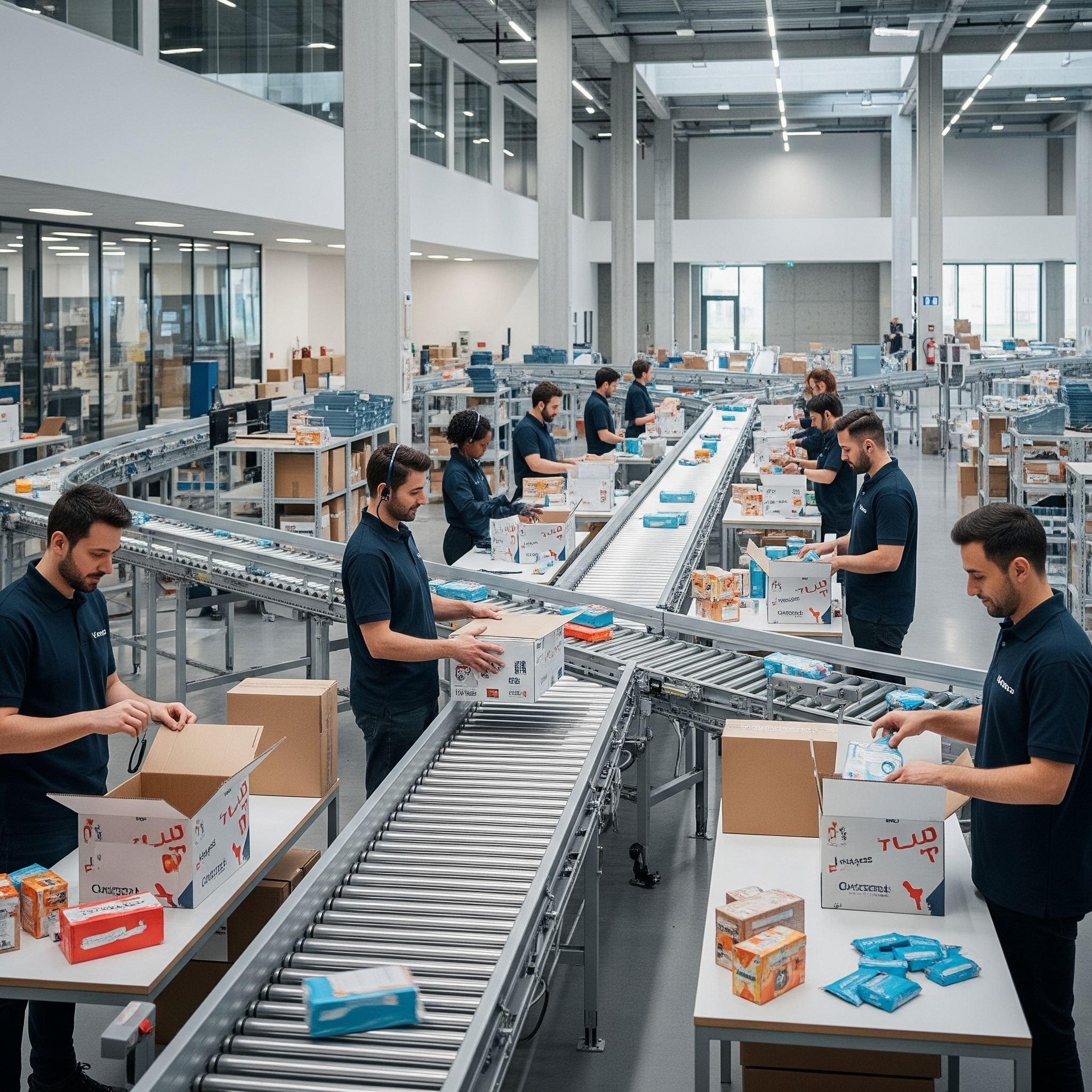
Blogs
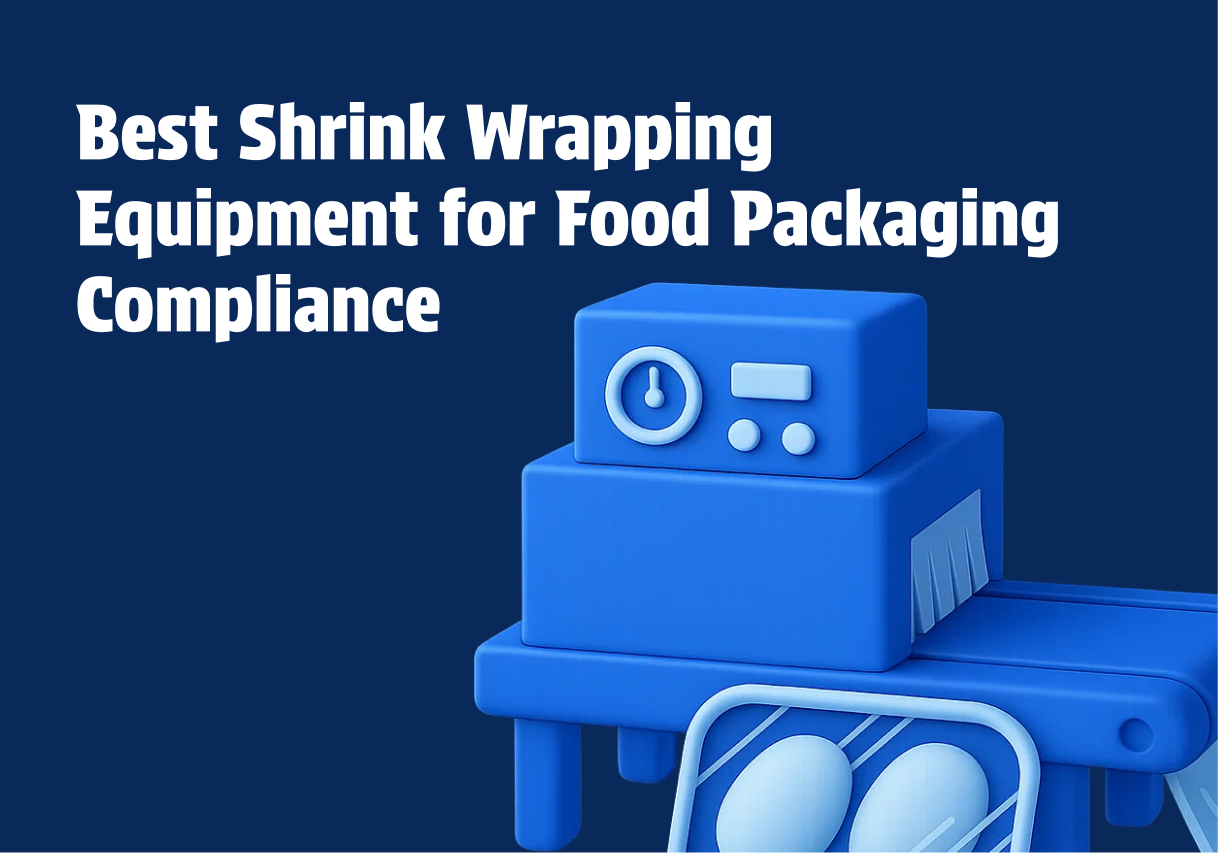
Best Shrink Wrap Machines for Your Business
Discover the best shrink wrapping equipment for food packaging compliance. Conflex offers high automation. Increase efficiency now!
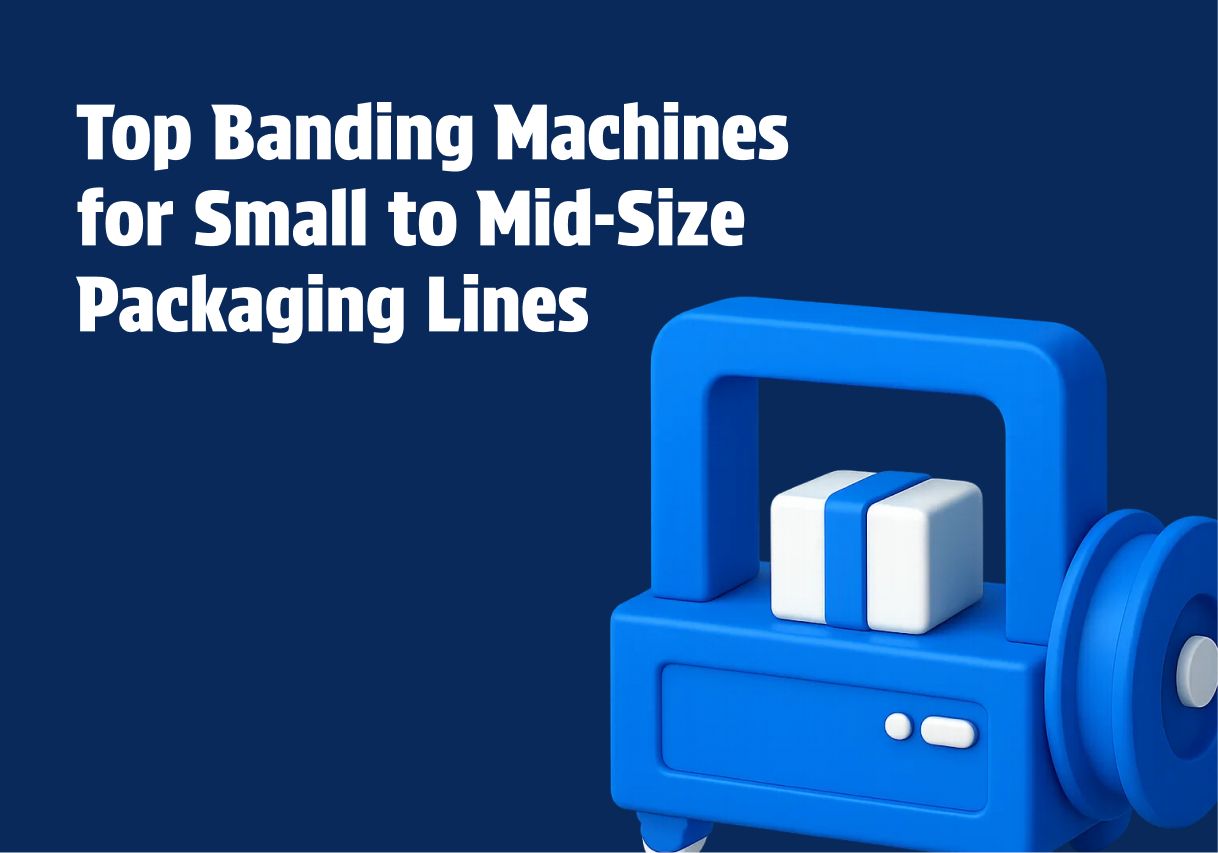
Top Banding Machines for Packaging Solutions
Find top banding machines for small to mid-size packaging lines! Discover flexible automation options and sustainability features. Optimize efficiency today!
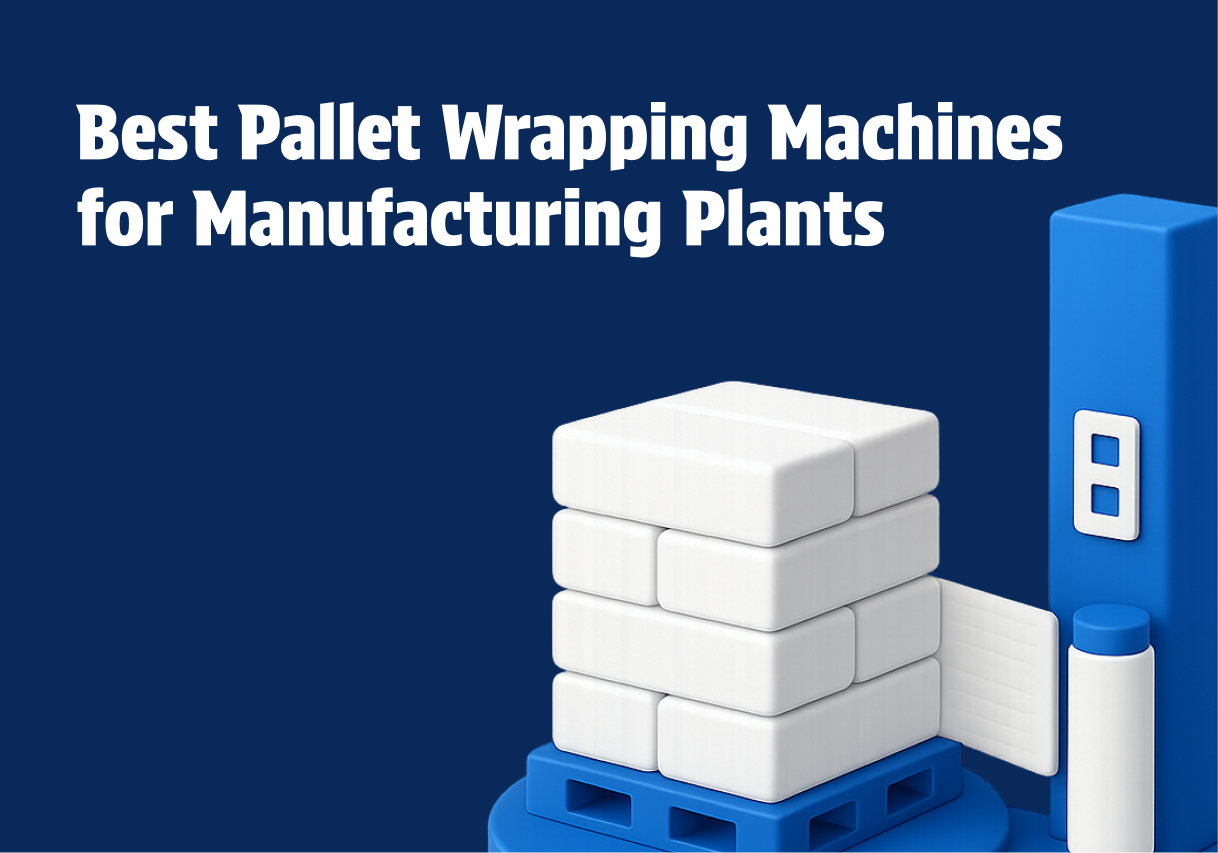
Best Pallet Wrapping Machines for Manufacturing Plants 2025
Explore the best pallet wrapping machines for manufacturing plants in 2025. Learn how to choose, compare key models, and reduce wrapping costs.
